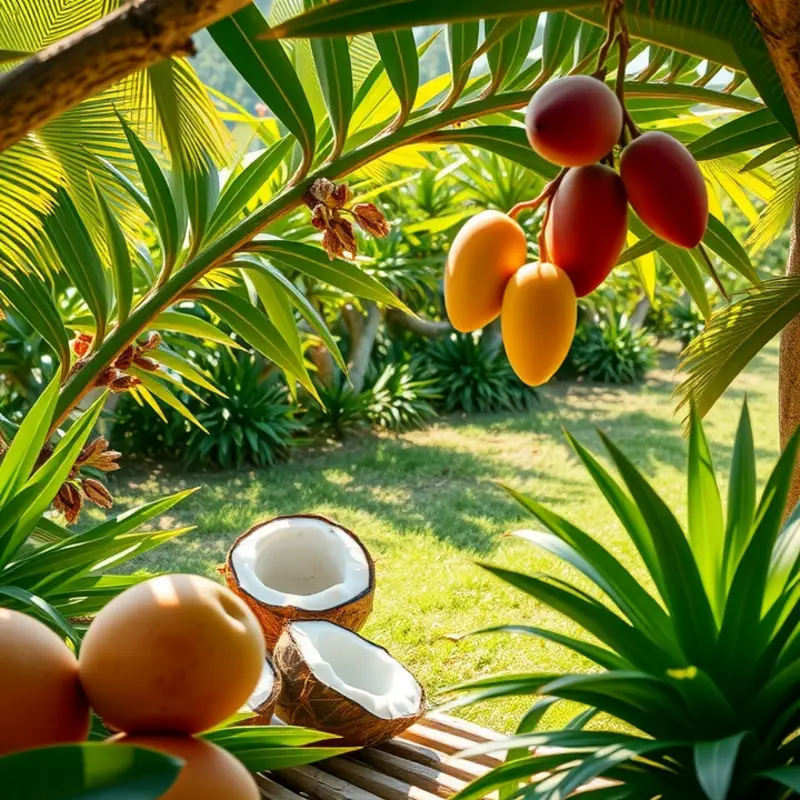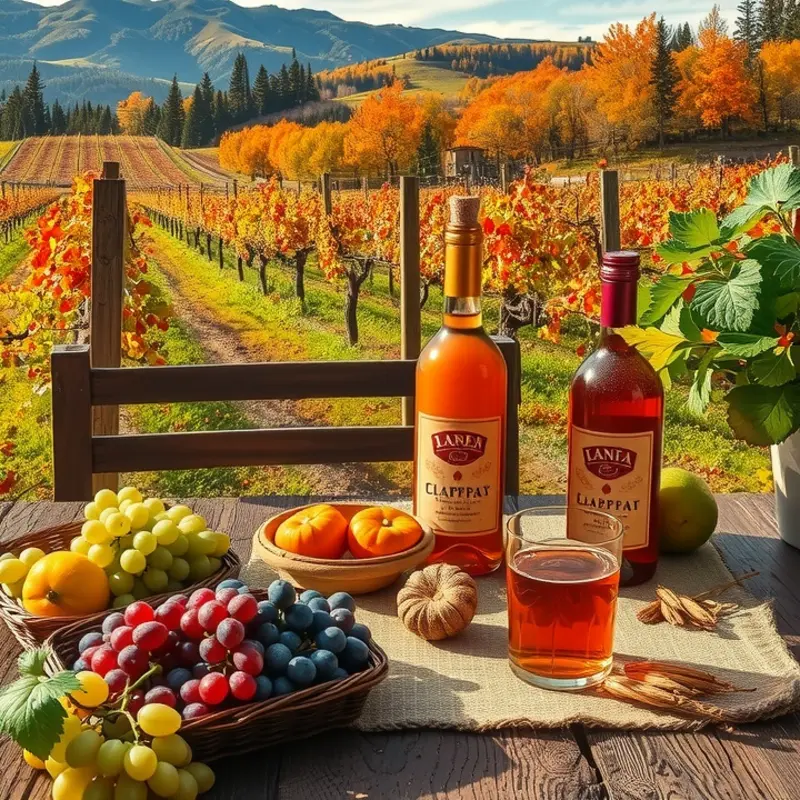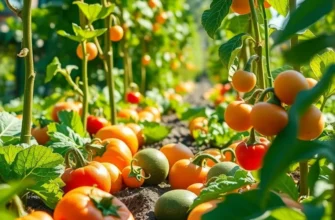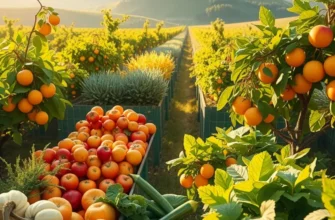Across the globe, festivals are occasions for joyous celebration, and at the heart of these vibrant events is a captivating array of traditional drinks. Each region boasts its unique beverages, steeped in culture and history, that tell stories of their origins. From the coconut-infused concoctions of South Asia to the rich, spiced mulled wines of Europe, these festival drinks not only quench our thirst but also connect us to the roots of local traditions. Let’s raise our glasses to the unique flavors crafted for celebration!
Tropical Elixirs: The Drinks of Southeast Asian Festivals

Southeast Asia, a tapestry of vibrant cultures, is celebrated for its colorful festivals and distinctive flavors. The region’s tropical climate inspires a variety of beverages that are both refreshing and culturally significant. Among these, Teh Tarik of Malaysia and the globally adored Boba tea of Taiwan are quintessential festival favorites.
Teh Tarik, meaning “pulled tea” in Malay, is not merely a drink but a performance art. It is prepared by “pulling” a blend of strong black tea and condensed milk from one container to another, creating a frothy, creamy delight. This process, often witnessed during Malaysian festivals, transforms the act of drinking tea into a communal ritual, drawing people together to enjoy its soothing warmth. The pulling technique is believed to enhance both the flavor profile and aroma, making Teh Tarik an essential experience of traditional gatherings.
In Taiwan, Boba tea—or bubble tea—has transcended its origins to become an international sensation. This drink, often infused with spirited festivities, combines tea with chewy tapioca pearls, offering a playful texture that complements its sweet taste. During Taiwanese festivals, stalls overflow with variations of Boba, from fruity concoctions to classic milk teas. Each vendor proudly showcases their unique twist, making every sip an exploration of innovation and tradition.
Both beverages exemplify how drinks play a pivotal role in festivals, acting as symbols of hospitality and community. As festival-goers enjoy these beverages, they partake in a cultural tapestry that honors shared heritage while embracing modern influences.
The ingredients used in these drinks are integral to their identity. The rich black tea used in Teh Tarik is often sourced locally, providing a point of pride and economic sustainability for regional farmers. Similarly, the tapioca pearls in Boba tea illustrate the importance of local agricultural products, fostering a connection between cultivator and consumer that enhances the drink’s cultural resonance.
Furthermore, these traditional drinks promote a form of mindful consumption. Each sip encourages appreciation of the craftsmanship behind its preparation, aligning with concepts of mindful eating. Such practices highlight the significance of traditional drinks far beyond simple refreshment, amplifying their importance within festive decorum.
Ultimately, the beverages of Southeast Asian festivals offer a sip of tradition, uniting people in celebration. As these drinks cross borders, they carry with them stories, memories, and an enduring sense of community. Through every cup of Teh Tarik and glass of Boba tea, festival-goers can taste the rich tapestry of Southeast Asian culture.
Cheers to Tradition: European Festive Brews

From the vibrant piazzas of Italy to the bustling Christmas markets of Germany, Europeans have long embraced the art of crafting spirited beverages that signify cultural pride and festive joy. Each region boasts its distinctive drink, drawing from local ingredients and traditions.
In Italy, the Aperol Spritz captures the essence of warm summer evenings and lively festivals. This drink combines Aperol, Prosecco, and a splash of soda water, creating a refreshing yet sophisticated sip. Signature to Italian parties, its bright orange hue stems from bittersweet Aperol, infused with herbs and roots. The prosecco adds effervescence, elevating the drink’s celebratory nature. Festivals in Italy, from Venice’s masquerades to Verona’s operatic gatherings, see the Aperol Spritz as a staple, symbolizing joy in every glass.
Heading north, Germany’s Glühwein is a hallmark of winter celebrations. This mulled wine, infused with spices like cinnamon, cloves, and star anise, is served hot, providing warmth against chilly December winds. Red wine forms the base, often sweetened with sugar or honey. This comforting brew is found at Christmas markets across the country, where vendors serve it steaming from ornate stalls. Glühwein isn’t just a drink; it’s a tradition deeply embedded in German holiday culture, fostering unity as people gather under twinkling lights.
Spain offers a different kind of festive toast with its classic Sangria. Although not tied to a specific festival, Sangria epitomizes celebration, particularly during lively regional events like the Feria de Abril in Seville or La Tomatina in Valencia. Typically made with red wine, chopped fruits, orange juice, and a touch of brandy, Sangria marries vibrant flavors and colors. It’s enjoyed in shared carafes, encouraging camaraderie and conversation.
In these European traditions, the preparation method often holds as much importance as the drink itself. Italians carefully select the finest prosecco for their Aperol Spritz, ensuring each serving is perfectly balanced. German families often have cherished recipes for Glühwein, handed down through generations. Likewise, Spanish hosts take pride in crafting Sangria that showcases the season’s freshest fruits.
These drinks reflect not only regional ingredients but also a commitment to preserving cultural practices. They are more than refreshments; they’re a means of storytelling, with each sip reminding participants of history, heritage, and communal bonds. This link between drink and culture highlights how such traditions instill a sense of belonging among festival-goers.
For those interested in exploring new culinary traditions, understanding these drinks provides a gateway to appreciating broader cultural contexts. Learning about how ingredients shape these traditional beverages could add depth to one’s culinary knowledge, similar to how mastering various flavors enhances kitchen creativity. For instance, those curious about infusing new ingredients into familiar recipes might find insights from “Flavor Boosters Without Salt” beneficial.
In sum, European festival drinks embody the spirit of celebration, seamlessly blending history, culture, and community. They remind us that traditions are best enjoyed with others, raising a glass to the enduring power of shared experiences.
Final words
Exploring regional festival drinks opens a window into the diverse culinary landscapes of our world. Each sip tells a story, reflecting the rich cultural practices and communal spirits of celebration. From the refreshing tropical teas of Asia to the warm comforting wines of Europe, these beverages bring people together and embody the flavors of tradition. As you begin to embrace these delightful drinks, consider how they connect you to the joy of festivities worldwide. So, raise a glass—perhaps filled with a vibrant concoction from your favorite region—and celebrate the cultural tapestry of flavors that unite us all.








